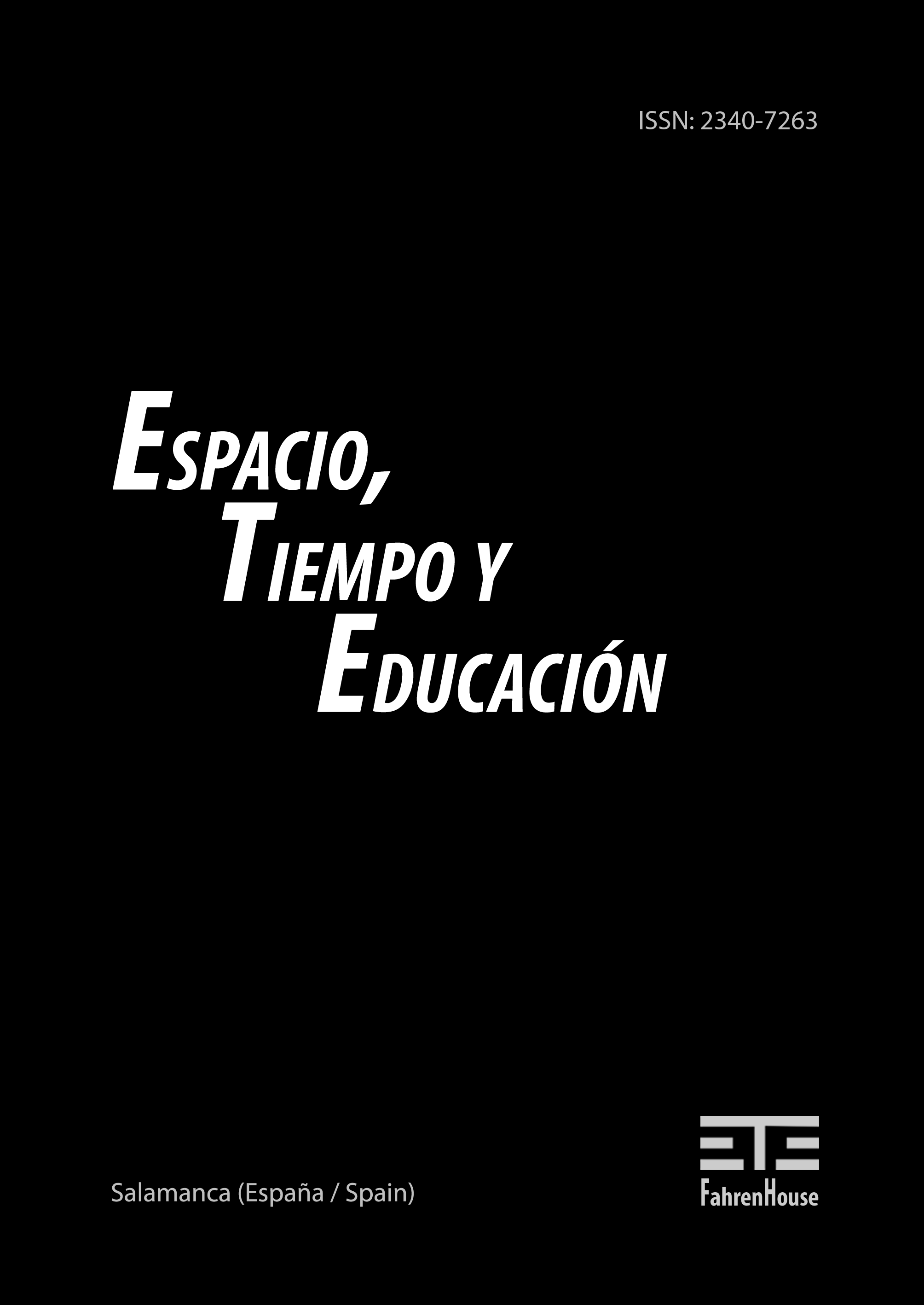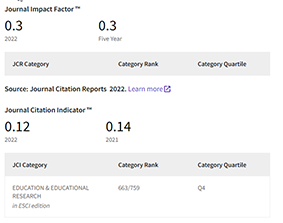The Experience of Being a Lay Teacher in Catholic Schools: An Approach for Investigating the History of an Under-researched Field
DOI:
https://doi.org/10.14516/ete.182Keywords:
Catholic education, schools, lay teachers, life story, innovative researchAbstract
Internationally, there has been a major output of empirical research on Catholic education over the last two decades. However, it has not been accompanied by a similar corpus of related work indicating possible new directions such research could take, including those that could be undertaken by using a diverse range of methodologies on a wide range of topics neglected to date. This paper indicates one such direction that could be taken in relation to historical research on lay teachers in Catholic schools from the 1940s to the present. First, the historiographical work that has been undertaken on the history of teachers more broadly is considered. An overview on the official status of the laity and the lay teacher historically within the Church is then considered. Finally, an argument for the use of a «life story» research approach for the generation of research questions to investigate the experience of being a lay teacher in Catholic schools. The approach is suitable for «insider research», where the focus is on investigating issues that were of concern for participants, rather than on pursuing pre-ordained questions of interest to the researcher and which usually arise primarily from a reading of the relevant background literature only.
References
Abrams, L. (2014). Memory as both source and subject of study: The transformations of oral history’. In Berger, S., & Niven, B. (Eds.), Writing the history of memory (pp. 89-109). London: Bloomsbury.
Allport, G. W. (1942). The use of personal documents in psychological research. New York: Social Science Research Council.
Altenbaugh, R.J. (1992). The teacher’s voice. London: The Falmer Press.
Atkinson, R. (2002). The life story interview. In Gubrium J. F., & Holstein, J. A. (Eds.), Handbook of interview research: Context and method (pp. 121-140). London: Sage.
Bruce, S. (2003). God is dead: Secularization in the West. Oxford: Blackwell.
Burke, C., & Dudek, M. (2010). Experiences of learning within a twentieth-century radical experiment in education. Oxford Review of Education, 36(2), 203-218.
Burley, S., & O’Donoghue, T. (2008). God’s Antipodean teaching force: An historical exposition on Catholic teaching religious in Australia. Teaching and Teacher Education, 24(1), 180-189.
Bryk, A., Lee, V., & Holland, C. (1993). Catholic schools and the common good. Cambridge, MA: Harvard University Press.
Crook, D., & McCulloch, G. (2002). Introduction: Comparative approaches to the history of education. History of Education, 31(5), 397-400.
Crotty, M. (2001). Making the Australian male: Middle-class masculinity 1870-1920. Melbourne: Melbourne University Press.
Cunningham, P., & Gardner, P. (2004). Becoming teachers: Texts and testimonies 1907-1950. London: Woburn Press.
De Coninck-Smith, N. (2008). The class of 1980: Methodological reflections on educational high school narratives from Denmark in the 1970s and 1980s. Paedagogica Historica, 33, 733-746.
Denzin, N. K. (1989). The research act. Chicago: Prentice Hall College Div.
Dunn, S. (1988). Education, religion and cultural change in the Republic of Ireland. In Tulasiewicz, W., & Brock, C. (Eds.), Christianity and educational provision in international perspective (pp. 90-104). London: Routledge.
Elliott, K. (2004). Between two worlds: The Catholic educational dilemma in 1944. History of Education, 33(6), 661-683.
Finkelstein, B. (1989). Governing the young: Teacher behaviour in popular primary schools in nineteenth century United States. London: Falmer.
Finkelstein, B. (1998). Classroom management in the United States. In Shimahara, N.K. (Ed.), Politics of classroom life: Classroom life in international perspective (pp. 15-34). New York: Garland Publishing, Inc.
Gardner, P., & Cunningham, P. 1997. Oral history and teachers’ professional practice. Cambridge Journal of Education, 27(3), 331-342.
Goodman, J., & Martin, J. (2002) (Eds.), Gender, colonialism and education: The politics of experience. London: Woburn Press.
Goodson, I. (1992). Studying teachers’ lives. London: Falmer.
Grace, G. (2002). Catholic schools: Mission, markets and morality. London: Routledge.
Hellinckx, B., Simon, F., & Depaepe, M. (2009). The forgotten contribution of the teaching sisters. Leuven: Leuven University Press.
Hornsby-Smith, M.P. (2000). The changing social and religious context of Catholic schooling in England and Wales. In Eaton, M., Longmore, J., & Naylor, A. (Eds.), Commitment to diversity: Catholics and education in a changing world (pp. 15-34). London: Cassell.
Jackson, R. (2007). European institutions and the contribution of studies of religious diversity to education for democratic citizenship. In Jackson., R., Miedema, S., Weisse, W., & Willaime, J. P. (Eds.), Religion and education in Europe: Developments, contexts and debates (pp. 27-55). Munster: Waxman Verlag, GmbH.
Judge, H. (2002). Faith-based schools and the state: Catholics in America, France and England. Wallingford Oxford, United Kingdom: Symposium Books.
Kotre, J. (1984). Outliving the self: Generativity and the interpretation of lives. Baltimore: Johns Hopkins Press.
Kyle, N.K. (Ed.). (1989). Women as educators in 19th and 20th Century Australia. Wollongong: University of Wollongong, School of Learning Studies.
Lancy, D. F. (1993). Qualitative research in education. New York: Longman.
Lawton, D., & Cairns, J. (2005). Faith schools: Some political issues and an agenda for research. In Gardner, R., Cairns, J., & Lawton, D. (Eds.), Faith schools: Consensus or conflict (pp. 242-256) London: Routledge.
Luckcock, T. (2007). Faith in school leadership: Conceptualising the distinctiveness and inclusiveness of church school leadership. Management in Education, 21(15), 15-20.
Mackinnon, A. (1984). A new point of departure. History of Education Review, 13(2), 1-4.
Macmillan, M. (2009). The uses and abuses of history. London: Profile Books.
McCulloch, G. (2011). The struggle for the history of education. London: Routledge.
McCulloch, G., & Woodin, T. (2010). Towards a social history of learners and learning. Oxford Review of Education, 36(2), 133-140.
McLaughlin, D. (2008). Educating together in Catholic Schools: A shared mission between consecrated persons and the lay faithful, Journal of Catholic School Studies, 80(2), 37-53.
Madeley, J. T. S. (2003). A Framework for the comparative analysis of church-state relations in Europe. In Madeley, J. T. S., & Enyedi, Z. (Eds.), Church and state in contemporary Europe: The chimera of neutrality (pp. 237-255). Portland, OR: Frank Cass.
Miedema, S. (2007). Contexts, debates and perspectives of religion in education in Europe: A comparative analysis. In Jackson., R., Miedema, S., Weisse, W., & Willaime, J. P. (Eds.), Religion and Education in Europe: Developments, Contexts and Debates (pp. 267-283). Munster: Waxman.
Minichiello, V., Arone, R., Timewell, B., & Alexander, L. (1991). In-depth interviewing: Researching people. Melbourne: Longman Cheshire.
O’Connor, S. (1968). Post-primary education: Now and in the future. Dublin: Talbot Press.
O’Donnell, H.J. (1988). The lay teacher in Catholic education. In Perko, F. M. (Ed.), Enlightening the next generation: Catholics and their schools 1830-1980 (pp. 254-266). New York: Garland Publishing Inc.
O’Donoghue, T. (2013). Catholic teaching brothers: Their life in the English-speaking world, 1891-1965. New York: Palgrave Macmillan.
O’Donoghue, T.A. (2004). Come follow me and forsake temptation: Catholic schooling and the recruitment and retention of teachers for religious teaching orders, 1922-1965. Bern: Peter Lang.
O’Donoghue, T., & Brooker, R. (1993). Education through the artist’s eye: A critical interpretation of the recollections and viewpoints of selected Queensland artists. Australian Art Education, 16, 18-25.
O’Donoghue, T.A., & Potts, A. (2004). Researching the lives of Catholic teachers who were members of religious orders: Historiographical considerations. History of Education, 33(4), 469-482.
O’Leary, B. (2000). Introduction. In M. McGrath, The Catholic Church and Catholic schools in Northern Ireland: The price of freedom (pp. vi-xiv). Dublin: Irish Academic Press.
Rasmussen, L. B. (2014). Material and affective movements: Danish pupils’ reminiscences, 1945-2008. In Larsson, A., & Norlin, B. (Eds.), Beyond the classroom (pp. 183-206). London: Peter Lan.
Ritzer, G. (1994). Sociological theory. New York: Alfred K. Knopf.
Robinson, W. (2004). Power to teach: Learning through practice. London: Woburn.
Rousmaniere, K. (2009). The great divide: principals, teachers and the long hallway between them. History of Education Review, 38(2), 17-27.
Sacred Congregation for Catholic Education. (1982). Lay Catholics in schools: Witness to faith. London: Catholic Truth Society.
Shah, S. (2006). Educational leadership: An Islamic perspective. British Educational Research Journal, 32(3), 363-385.
Silver, H. (1994). Historiography of education. In Husen, T., & Postlethwaite, T.N. (Eds.), International encyclopedia of education (pp. 2607-2618). London: Pergamon.
Smit, M. (2014). School culture at Fons Vitae: Capturing pupil experiences in a Dutch Catholic girls’ school 1914-40. In Larsson., A., & Norlin, B. (Eds.), Beyond the classroom (pp. 103-122). London: Peter Lang.
Spaull, A. (1985). A history of the Federal teachers’ unions in Australia, 1921-85. Canbera: Australian Teachers’ Federation.
Spaull, A., & Sullivan, M. (1989). A history of the Queensland Teachers’ Union. Sydney: Allen and Unwin.
Sullivan, J. (2006). Faith schools: A culture within a culture in a changing world. In deSouza., M., Durka, G., Engerbretson, K., Jackson., R., & McGrady, A., International handbook of the religious, moral and spiritual dimensions of education (pp. 937-947). Dordrecht: Springer.
Sweetman, R. A. (2002). A fair and just solution? A history of the integration of private schools in New Zealand. Palmerston North, New Zealand: Dunmore Press.
Theobald, M. R. (1994). History of women’s education in Australia. In Husen, T., & Postlethwaite, T. N. (Eds.), The international encyclopaedia of education (pp. 6731-6735). London: Pergamon.
Theobald, M. (1996). Knowing women: Origins of women’s education in 19th century Australia. Cambridge: Cambridge University Press.
Thomas, V. (1989). The Role of the Laity in Catholic Education in South Australia from 1836 to 1986. (Unpublished PhD thesis). The Flinders University of South Australia.
Thompson, P. (2000). The voice of the past: Oral history. Oxford: Oxford University Press.
Trimingham-Jack, C. (2003). Growing good Catholic girls. Education and convent life in Australia. Melbourne: Melbourne University Press.
Trotman, J. (2008). Girls becoming teachers. New York: Cambria Press.
Weisse, W. (2007). The European project on religion and education: ‘REDCo’. An introduction. In Jackson, R., Miedema, S., Weisse, W., & Willaime, J. P. (Eds.), Religion and education in Europe: Developments, contexts and debates (pp. 9-26). Munster: Waxman Verlag, GmbH.
Whitehead, K. (2003). The new women teachers come along. Sydney: ANZHES Monograph Series.
Whitehead, K. (2007). The spinster teacher in Australia from the 1870s to the 1960s. History of Education Review, 36(1), 1-17.







